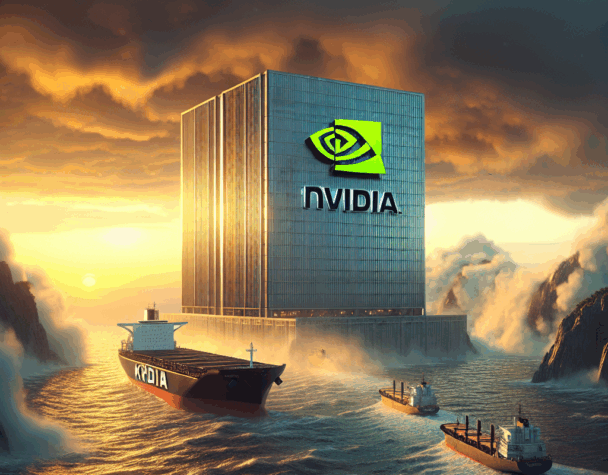
Nvidia's $4T Milestone Amidst Market Volatility
Mon, July 14, 2025In recent developments, the financial landscape has been marked by significant milestones and challenges. Notably, Nvidia’s ascent to a $4 trillion market capitalization underscores the transformative power of artificial intelligence (AI) in the technology sector. Concurrently, the introduction of new tariffs on Korea and Japan has introduced volatility, affecting investor sentiment across various industries.
Nvidia’s Unprecedented Market Capitalization
Nvidia Corporation has achieved a historic milestone by becoming the first public company to surpass a $4 trillion market valuation. This achievement is a testament to the company’s dominance in AI chip technology and its pivotal role in the burgeoning AI revolution. The surge in Nvidia’s stock price reflects robust investor confidence in AI’s potential to reshape industries ranging from logistics to healthcare.
Implications for the Technology Sector
Nvidia’s remarkable growth has had a ripple effect across the technology sector. Companies such as Advanced Micro Devices (AMD), Arista Networks, and Super Micro Computer have experienced gains between 1% and 4%, buoyed by the prevailing optimism surrounding AI’s economic potential. This trend indicates a broader market enthusiasm for AI-driven innovations and their capacity to drive future growth.
Market Volatility Amid New Tariffs
In contrast to the optimism in the tech sector, the broader market has faced headwinds due to geopolitical developments. The White House’s recent announcement of 25% tariffs on imports from Korea and Japan has introduced a layer of uncertainty. These tariffs, set to commence on August 1, have prompted concerns about potential retaliatory measures and their implications for global trade dynamics.
Investor Sentiment and Market Response
The announcement of these tariffs led to an immediate market reaction, with the Dow Jones Industrial Average declining by approximately 1%. Investors are now grappling with the potential for escalating trade tensions and their impact on global supply chains. The technology sector, despite its recent gains, is not immune to these developments, as companies with international operations may face challenges related to increased costs and disrupted trade relationships.
Conclusion
The juxtaposition of Nvidia’s historic market capitalization and the introduction of new tariffs highlights the complex interplay between technological innovation and geopolitical factors in shaping the financial markets. While AI continues to drive growth and investor enthusiasm, external factors such as trade policies can swiftly alter market dynamics. Investors are advised to stay informed and consider both the opportunities presented by technological advancements and the risks associated with geopolitical developments.
For a visual representation of the current market performance, consider the following chart:
This chart provides a snapshot of the SPDR S&P 500 ETF Trust (SPY), reflecting the market’s response to recent events.

